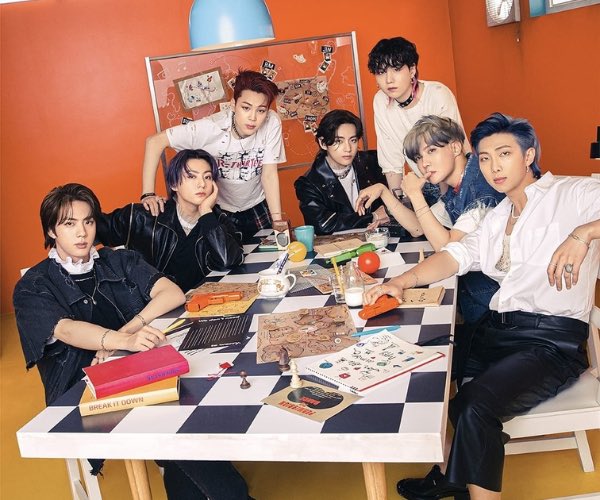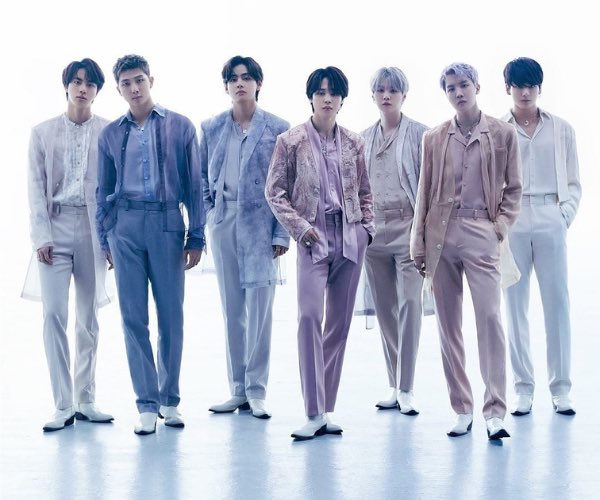
Jun 16 2025.
views 305By Piyumi Wickrama
Earlier this month, millions of fans around the world rejoiced as BTS, the global pop sensation from South Korea, were reunited after completing their mandatory military service. All seven bandmates appeared together for the first time in 18 months — a moment of light-hearted, affectionate camaraderie from a group who’ve not only reshaped pop music but redefined what global cultural power can look like. For many, it was a moment of joy.
But here in Sri Lanka, I found myself gritting my teeth—again—as I heard the usual mutterings: “They look like girls.” “Why do they wear so much make-up?” “They still can’t speak English?” It wasn’t a criticism of music. It was a mockery of identity—their faces, their language, their fashion, their intimacy, their very being.
And beneath the ridicule lies something uglier: racial bias dressed up as opinion, inherited from a colonial lens we’ve never quite put down.

The discomfort many Sri Lankans (and South Asians more broadly) seem to have with male K-pop idols isn’t really about their music. It’s about masculinity. Or, more precisely, who gets to define it. Somewhere between colonisation and globalisation, we accepted a very narrow template: white, stoic, rugged, unadorned. Preferably in a suit.
Before that? Our own traditions across Asia included flamboyant kings, ornate dancers, bare-chested poets and storytellers. But in the postcolonial world, softer features, fashion experimentation, and physical closeness between men are all too easily branded effeminate, or worse, deviant.
Make-up? Rock stars have been wearing it for decades — from David Bowie to KISS. Fashion? BTS wear designer brands that push boundaries, much like any artist worth their salt. Physical closeness? They’re close friends who’ve trained and lived together for over a decade. Male athletes embrace all the time, and no one bats an eye. And men all around the world (including Sri Lanka) exchange hugs and kisses in greeting each other.
And yet, here we are, treating Korean men as some kind of threat to our cultural order.
Then there’s the language. I was once asked, “How do you even understand these ching-chong lyrics?” Let’s set aside, for a moment, how staggeringly racist that is. Korean is a rich, intricate language with an elegant script and centuries of literature. I’ve studied it to an intermediate level and found it to be as expressive as it is brilliant.
BTS have released songs in both Korean and English, and their lyrics (often written by the band members themselves) tackle everything from mental health and self-worth to identity, inequality, and belonging. Their songwriting blends introspection with clever bilingual wordplay, weaving meaning across linguistic boundaries—a rare skill that few artists master, in any language.
But more telling than the question is the sentiment behind it: that some languages are more worthy of attention. That French and Italian sound romantic, but Japanese and Chinese sound bizarre. That a Korean or Indian accent in English is amusing, but a British or American one is aspirational. That it’s perfectly acceptable to sing along to “Despacito” by Justin Bieber without knowing a word of Spanish, but singing along to “Spring Day” by BTS is laughable. These aren't just linguistic preferences.
They’re the remnants of a colonial hierarchy of sound — one where Europeanness equals legitimacy, and anything outside that range is comical or disposable.

What troubles me most is that many of the people making these comments should know better. I know Sri Lankans who boast worldly educations, internationalised interests, and intersectional friend circles that span continents, who can speak fluently about systemic racism in the West, post memes about microaggressions, and yet still scoff at Korean pop culture, reducing it to glitter and “girly boys” who “must be gay” because they “look soft” and wear “blouses”.
This isn’t just irony. It’s the sort of internalised prejudice that runs deep—so deep, in fact, that we often don’t recognise it as racism at all. It’s woven so insidiously into our social fabric that we often mistake it for taste or discernment. We tell ourselves we’re being objective or realistic when, in fact, we’re parroting a racialised value system designed elsewhere. One that continues to work—not by force, but by getting us to enforce it on each other.
None of this is accidental. Colonialism was not just an economic project; it was a cultural one. It created hierarchies, pitted communities against one another, and taught us whom to admire and whom to ignore. Divide and conquer wasn’t just about land. It was about the mind.
Sri Lanka once had thriving trade and cultural ties with East Asia. We exchanged lacquerwork, religious texts, maritime routes and diplomacy with Korea, China, Japan, and other East Asian neighbours. Yet today, we praise European whiteness while sneering at East Asian paleness, mocking soft features and smooth skin as “unmanly” thanks to the Western ideals steeped in us like bitterly dark tea. It’s time we acknowledged how easily we fall into colonial thinking — measuring everyone, including ourselves, against Western standards we had no hand in setting.
To reduce BTS to just another boy band is to completely miss the point. They’re not just musicians. They are, arguably, one of the most successful soft power exports in recent history. They’ve spoken at the UN, collaborated with UNICEF, topped the Billboard charts, and disrupted global fashion, language, and cultural norms along the way. They didn’t just ride a wave; they created one.
Their very existence complicates long-held assumptions: that only Western artists can go global, that English is a prerequisite for success, that masculinity must look a certain way, that Asian culture exists only on the fringes of global relevance. And for some, this is deeply unsettling because it represents a shift in power—cultural, aesthetic, and ideological.

So here’s a question worth asking: when we mock Korean artists, who are we really laughing at? And who taught us to do that?
In a world that’s becoming increasingly interconnected, clinging to old colonial hierarchies is not just ignorant — it’s self-defeating. We’re so busy mocking each other that we fail to see the bars of the old system still surrounding us.
It’s time we stopped using the coloniser’s mirror to define our worth — or anyone else’s. Time we gave up judging language, fashion, and identity through eyes that never saw Asians as worthy.
I’m not writing this to force my love of BTS on you. They just happen to be the catalyst for this long overdue conversation. Because whether or not BTS make your kind of music, I believe the bigger questions they raise are well worth listening to.
Want to explore race, identity, and postcolonial culture a little further? Here’s a curated mix of books, films, and audio that unpack the ideas behind cultural bias, with relevance to Sri Lanka and beyond.
Read
The Colour of Inequality – Sunil Bastian & N. Ramani Jayasundere
A deep dive into how ethnicity, class, and power shape inequality in Sri Lanka.
Minor Feelings – Cathy Park Hong
Lyrical, witty, and painfully sharp, this collection of essays explores what it means to live with racial dissonance in a world that stereotypes and erases.
Decolonising the Mind – Ngũgĩ wa Thiong’o
A classic work that argues language is the first battlefield in the fight for postcolonial identity—still incredibly relevant today.
Orientalism – Edward Said
A foundational text for understanding how the West has historically framed and diminished “the East”, shaping how Asian cultures are perceived globally.
Listen
Code Switch (NPR Podcast)
Smart, accessible conversations about race, identity, and culture. Start with the episode “When You're 'Too Asian' and 'Not Asian Enough’”.
Watch
White Right: Meeting the Enemy (Documentary by Deeyah Khan)
A powerful exploration of racial hatred and unconscious bias, told through rare conversations with extremists and the people challenging them.
How Colonialism Shaped Modern Racism – CrashCourse on YouTube (10 mins)
A fast, thoughtful explainer that traces today’s racial hierarchies back to the empire. Clear, concise, and classroom-worthy.
1 Comments
Sawinde Weerasinghe says:
Jun 26, 2025 at 08:41 pmFinally someone said it. Thank you for bringing this deep-rooted issue into light. If I am to add something to this discussion, I would say that the patriarchal system brought in by colonizers also heavily influence our perception of masculinity. It also is a great entry point to discuss that postcolonial, European patriarchy is harmful to men as well in the long run since the "socially acceptable" definition of manhood/masculinity limits how men express themselves.